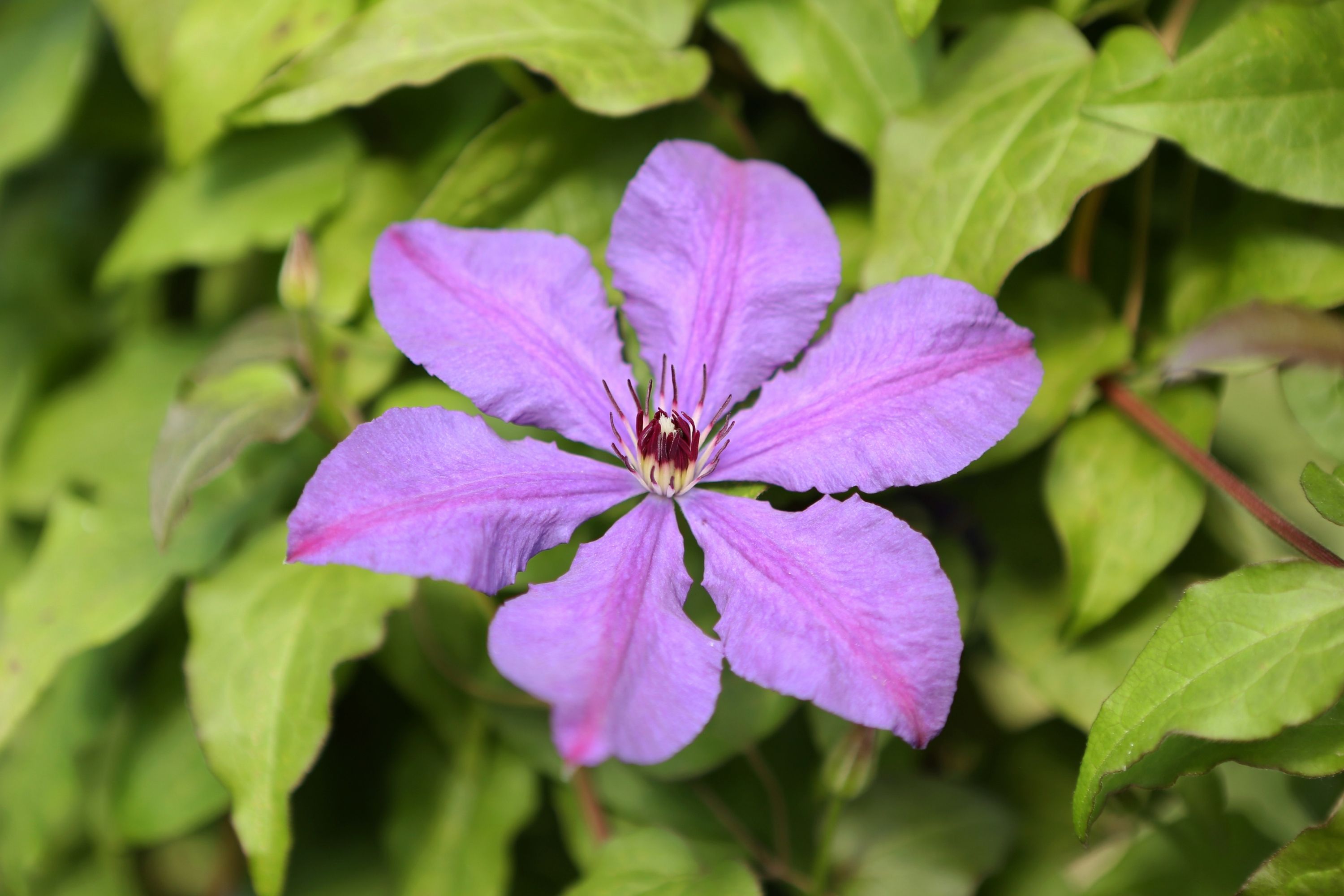Italian clematis
(Clematis viticella)

Description
Clematis viticella, also known as Italian Clematis, is a species of flowering plant in the Ranunculaceae family. This hardy vine is native to southern Europe and is widely cultivated in gardens around the world due to its attractive blooms and versatility in landscaping. Description and Characteristics: Clematis viticella is a deciduous climber that can grow up to 20 feet (6 meters) tall. It has a woody stem that produces tendrils that help it climb and cling to structures. The leaves are compound and arranged in opposite pairs along the stem. They are usually trifoliate, with each leaflet being ovate to lanceolate in shape and about 2-4 inches (5-10 cm) long. The foliage is a deep green color, providing an attractive backdrop for the showy flowers. The flowers of Clematis viticella are the main attraction of the plant. They are produced in clusters at the tips of the branches, typically from mid-summer to early autumn. The flowers are bell-shaped and range in color from shades of pink, purple, red, and white. They are 2-4 inches (5-10 cm) in diameter and have 4-8 sepals, which are actually modified petals. The stamens are numerous and surround the central pistil, giving the flower a fluffy appearance. Cultivation and Growing Requirements: Clematis viticella is a hardy plant that is relatively easy to grow. It prefers a sunny location but can tolerate partial shade. It thrives in well-drained soil that is moist but not waterlogged. It is important to keep the roots cool, so mulching around the base of the plant can help. Clematis viticella can be grown in the ground or in containers, making it a versatile addition to any garden. Pruning is essential for maintaining a healthy Clematis viticella plant. In early spring, cut back the previous year's growth to a pair of strong buds. This will encourage new growth and a more robust plant. Regular deadheading, or removing spent blooms, will also promote more flowers. Propagation: Clematis viticella can be propagated by seeds, softwood cuttings, or layering. Seeds should be sown in the autumn or spring and require a period of cold stratification to germinate. Softwood cuttings can be taken in the summer and rooted in a well-draining potting mix. Layering involves bending a stem down to the ground and covering it with soil, allowing it to root before severing it from the parent plant. Uses: Clematis viticella is a popular ornamental plant in gardens around the world. It is often grown on trellises, arbors, and other structures, providing vertical interest and color. It can also be trained to grow along fences or walls, creating a natural screen. The flowers are attractive to bees and butterflies, making it a great addition to a pollinator garden. Varieties: There are numerous cultivars of Clematis viticella, each with its own unique characteristics. Some popular varieties include: 'Abundance': a deep pink double-flowered cultivar 'Alba Luxurians': a white-flowered cultivar with green tips on the sepals 'Etoile Violette': a dark purple-flowered cultivar with white stamens 'Polish Spirit': a deep purple-flowered cultivar with yellow stamens 'Venosa Violacea': a mauve-flowered cultivar with red-purple veins on the sepals Conclusion: Clematis viticella is a beautiful and versatile plant that can be a valuable addition to any garden.
Taxonomic tree:







